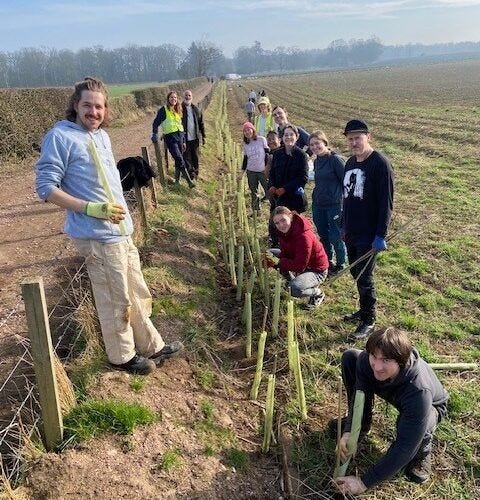Coastal Rewilding Wins: 16 km of Habitat Restored by University of St Andrews and What It Means for Your Garden
Last week the University of St Andrews announced that its “Nature Networks” project won the 2025 UK & Ireland Green Gown Award in the Nature Positive category. The project restored and connected habitats along 16 km of Fife’s coastline, covering woodland, hedgerows, meadow, wetlands and saline lagoon restoration.
This story offers three key themes that matter to us at LettsSafari, and that your garden or balcony can reflect:
1. Habitat connectivity & biodiversity resurgence
– The project established 4.78 ha of native woodland, 2,413 m of native hedgerow and 6,610 m² of meadow.
– It also restored a saline lagoon and brought neglected SSSI (site of special scientific interest) land under conservation grazing.
LettsSafari Take-away: Even small green spaces (your balcony, garden border, or communal park) can serve as stepping stones for wildlife - a tiny meadow patch, a native shrub hedge or a water feature can create mini-corridors. LettsSafari’s subscription support offers step-by-step rewilding tips so you can build habitat networks in your space, not just isolated patches.
2. Nature + people = resilience
– 408 people engaged in 38 practical volunteering/training sessions across students, staff and local residents.
– The project isn’t just about wild nature in a vacuum; it’s about community, wellbeing, education and climate adaptation.
LettsSafari Take-away: Your garden isn’t just a showpiece - it can be a classroom, a micro-rewilding lab, a personal resilience zone. LettsSafari helps you transform your space into a nature-hub where you, your friends or your family become part of the restoration story.
3. Scale matters, and so does beginning at home
– The scale of the project is landscape-level: 16 km coastline, multiple habitat types.
– Yet the principle is scalable down to backyards, balconies, parks.
LettsSafari Take-away: If a university can restore woodland, meadows and lagoons at scale, you can restore a corner of green, a wild patch, a naturalised flower-border. LettsSafari’s subscription model gives you hints and tips, seasonal planting advice and monitoring checklists to turn your space into a micro-rewilding project.
How LettsSafari provides the answer
At LettsSafari, we believe nature restoration isn’t just for national parks or estates - it starts with home, garden, balcony and community patches. Here’s how we support you:
Practical guidance: Our rewild-at-home modules show how to pick native plants, create mini-wetlands or wildflower corners, install simple structures (logs, deadwood, stone piles).
Monitoring & impact: We help you track changes - biodiversity counts (bees, birds, insects), wildlife sightings, vegetation growth. This mirrors how big-scale projects measure success.
Subscription model: Regular tips, content, seasonal advice mean your space evolves over time, aligning with the long-term nature restoration story.
Climate + nature synergy: Restoring your space helps with flood mitigation (rain gardens), carbon capture (native shrubs/trees), and biodiversity - all features celebrated by larger projects like the one at St Andrews.
Why this matters for garden & balcony owners
Your space matters. A garden or balcony that’s turned wild contributes to nature recovery, climate resilience and personal wellbeing. The St Andrews project reminds us: habitat restoration isn’t distant or abstract - it’s local, tangible and powered by people. By subscribing to LettsSafari, you’re joining the wave of change. Your flower-bed becomes part of the national mosaic of rewilding.
St Andrews is more than an award-winner - it’s a blueprint for nature restoration that starts at the scale of any green space. At LettsSafari, we equip you to turn your garden or balcony into a vital node in the wider network of wild-spaces. Because restoring nature? It begins right outside your door.



